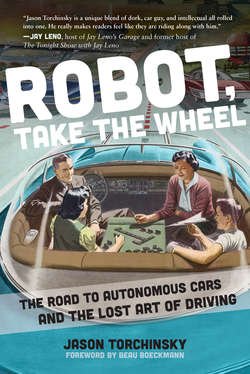Читать книгу Robot, Take the Wheel - Jason Torchinsky - Страница 12
На сайте Литреса книга снята с продажи.
1478: da Vinci’s Cart
ОглавлениеYou probably won’t be surprised to hear that the person responsible for this incredibly early technological wonder is Leonardo da Vinci, a man so far ahead of his time that he routinely had breakfast for dinner. Remember, this is the guy who came up with tanks, helicopters, parachutes, machine guns, scuba gear, and more, all in his spare time when he wasn’t painting masterpieces.
It’s actually best not to think about his accomplishments too much, because by comparison you’ll just feel like a big steaming pile of inadequacy in a funny hat. So let’s talk specifically about what da Vinci made. It’s usually just called the “self-propelled cart.”
The self-propelled cart was arguably the first robot as well, which supports my notion that self-driving vehicles are really just robots we’ll be able to ride in. This one though was never intended to carry passengers; it appears to have been intended to be about five and a half feet long by five feet wide by about three feet tall. It was powered by clockwork, which means it was powered by energy stored in springs, and the source of that energy was most likely human muscle. Since it was storing the energy and releasing it on demand, I think that makes it different than a human-powered vehicle like a bicycle; after all, gasoline, if you think about it, is essentially an energy storage system for decomposed dinosaurs and time, but we don’t consider cars to be dinosaur-powered.
Propulsion was provided by a pair of coil springs housed in drums, and the power from those springs, which diminished as they wound out, was kept steady by the use of a balance wheel, the sort used to keep spring-wound clocks running at a consistent rate. These springs could give the cart an effective range of about 130 feet of travel.
In addition to propelling itself, the cart had a mechanism by which it could be made to turn at preset points on its journey, by placing wooden blocks at locations between gears (some sources describe placing pegs into holes). It seems that only right turns were permitted, but even with that limitation the end result is impressive: this was a programmable machine, capable of executing a stored set of instructions for a very short journey. That, at least in a very simple sense, is an autonomous vehicle.
Da Vinci never actually produced his cart, but a replica based on his original drawings was built in 2004 by Paolo Galluzzi, director of the Institute and Museum of the History of Science in Florence.2
